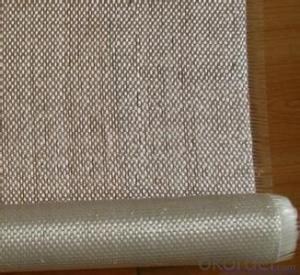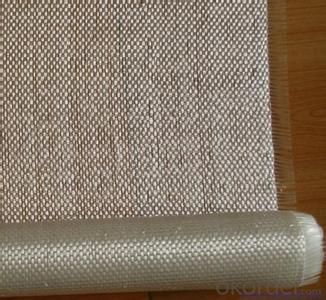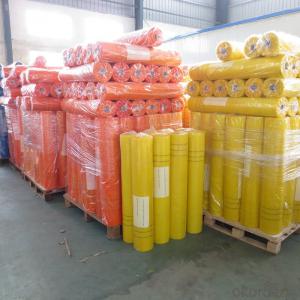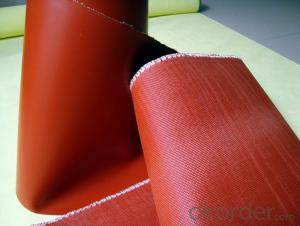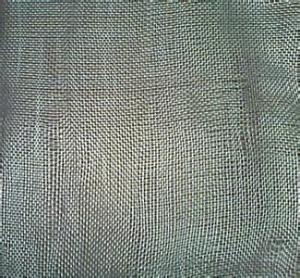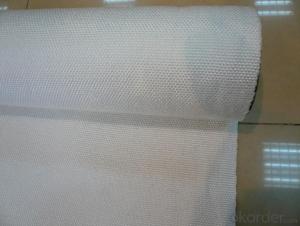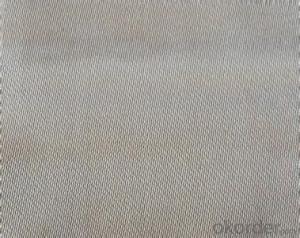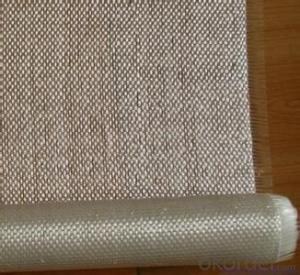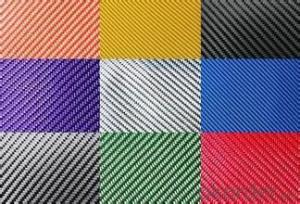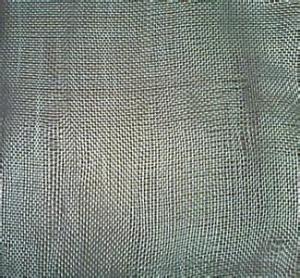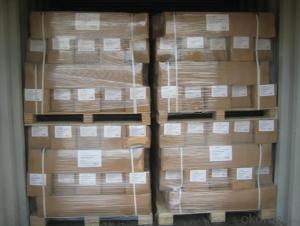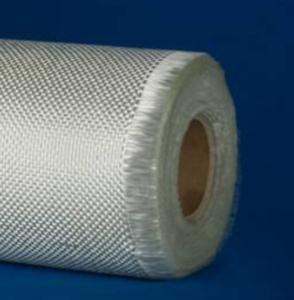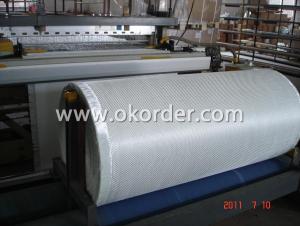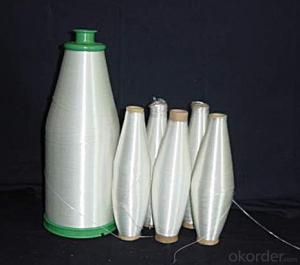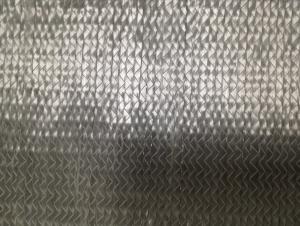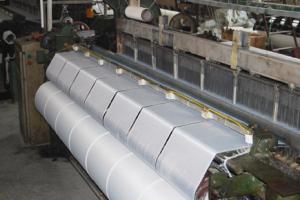Aluminum Coated Fiberglass Fabric - High Silica Fiber Glass Cloth with Good Price
- Loading Port:
- China Main Port
- Payment Terms:
- TT OR LC
- Min Order Qty:
- -
- Supply Capability:
- -
OKorder Service Pledge
Quality Product, Order Online Tracking, Timely Delivery
OKorder Financial Service
Credit Rating, Credit Services, Credit Purchasing
You Might Also Like
Quick Details
| Place of Origin: | Model Number: | ||||
| Application: | Weight: | Surface Treatment: | |||
| Width: | Weave Type: | Yarn Type: | |||
| Alkali Content: | Standing Temperature: | color: | |||
| fiberglass type: | product: | Pallet size: | |||
| packing: | carton size: | 20'ft container loading: | |||
| 40'ft container loading: |
Packaging & Delivery
| Packaging Detail: | plastic film+carton box + pallet |
| Delivery Detail: | 15-20days |
Specifications
1.High silica fiber glass cloth
2.Weight:300g/m2
3.Width: 50mm-3000mm
4.Good mechanical property and high strength
- Q: Is fiberglass fabric suitable for making sports equipment bags?
- Yes, fiberglass fabric is suitable for making sports equipment bags. It is known for its durability, strength, and resistance to tearing, making it an ideal choice for bags that need to withstand heavy usage and potential impact. Additionally, fiberglass fabric is lightweight, which is advantageous for sports equipment bags that need to be carried around easily.
- Q: Can fiberglass fabrics be used for insulation in appliances?
- Yes, fiberglass fabrics can be used for insulation in appliances. Fiberglass fabrics are made from woven glass fibers that are highly heat-resistant and have excellent insulation properties. They can effectively trap and retain heat, making them ideal for insulating appliances such as ovens, stoves, and refrigerators. Additionally, fiberglass fabrics are lightweight, flexible, and easy to work with, allowing them to be easily installed in various appliance designs. They also have good durability and can withstand high temperatures without degrading or losing their insulation properties. Overall, fiberglass fabrics are a reliable and efficient choice for insulation in appliances.
- Q: Is fiberglass fabric suitable for making outdoor cushions?
- Yes, fiberglass fabric is suitable for making outdoor cushions. It is known for its durability, water resistance, and resistance to mold and mildew. It can withstand various weather conditions and is easy to clean, making it a great choice for outdoor use.
- Q: How is fiberglass fabric used in the electrical industry?
- Due to its exceptional electrical insulation properties, fiberglass fabric finds extensive use in the electrical industry for a wide range of applications. Among the primary uses of fiberglass fabric in this industry is its insulation of electrical wires and cables. To enhance insulation capabilities and safeguard the wires from external elements, the fabric is commonly impregnated with a resin or varnish. Furthermore, fiberglass fabric is employed in the production of electrical insulation boards and panels. These boards are utilized to insulate electrical equipment and components, such as transformers, circuit breakers, and switchgear. To create a sturdy and long-lasting insulation system, the fabric is typically layered with epoxy or other insulating materials. Another significant application of fiberglass fabric in the electrical industry is the manufacturing of electrical insulation tapes. These tapes are used to wrap and secure electrical connections, providing an additional layer of insulation and protection. Fiberglass fabric tapes possess excellent heat resistance and can withstand high temperatures, making them suitable for electrical applications. In addition, fiberglass fabric is utilized in the construction of electrical insulation blankets and covers. These blankets are employed to cover electrical equipment like motors, generators, and transformers, providing an extra layer of insulation and safeguarding against moisture, dust, and other contaminants. In summary, fiberglass fabric plays a critical role in the electrical industry by offering reliable and effective electrical insulation solutions. Its high dielectric strength, heat resistance, and durability make it an ideal choice for various electrical applications, ensuring the safe and efficient operation of electrical systems.
- Q: How is fiberglass fabric dyed?
- Fiberglass fabric can be dyed using a variety of methods. One common way is through a process called solution dyeing, where the color is added to the solution before the fabric is formed. This method ensures that the color penetrates the entire fabric, resulting in a vibrant and long-lasting dye. Another method is called piece dyeing, where the fabric is dyed after it has been woven or knitted. This method allows for a wider range of color options and can be used to create patterns or designs on the fabric. In some cases, fiberglass fabric may also be printed with dyes using a technique called screen printing. This allows for more intricate designs and can be particularly useful for branding or decorative purposes. Overall, the dyeing process for fiberglass fabric depends on the desired outcome and can vary based on the specific requirements of the fabric and the manufacturer.
- Q: Is fiberglass fabric resistant to high temperatures?
- Yes, fiberglass fabric is highly resistant to high temperatures. It can withstand temperatures up to 1000 degrees Fahrenheit without melting or degrading, making it suitable for various applications that involve exposure to extreme heat.
- Q: What are the different weave styles available for fiberglass fabric?
- There are several different weave styles available for fiberglass fabric, each with its own unique characteristics and applications. Some of the most common weave styles include plain weave, twill weave, satin weave, and leno weave. 1. Plain weave: This is the simplest and most common weave style for fiberglass fabric. It consists of a simple over-under pattern where each warp yarn passes alternately over and under each weft yarn. Plain weave fabrics are typically balanced and have good stability, making them suitable for a wide range of applications. 2. Twill weave: Twill weave is characterized by a diagonal line pattern on the fabric surface. This weave style is created by passing the weft yarn over two or more warp yarns before going under one or more warp yarns. Twill weave fabrics have good strength and durability, making them ideal for applications that require a higher level of performance. 3. Satin weave: Satin weave is known for its smooth and lustrous appearance. It is created by passing the weft yarn over four or more warp yarns before going under one. This weave style produces a high number of floats on the fabric surface, resulting in a silky texture. Satin weave fabrics are lightweight, flexible, and have excellent draping qualities, making them ideal for applications that require a smooth and elegant finish. 4. Leno weave: Leno weave is a unique weave style that creates an open mesh-like structure. It is formed by twisting adjacent warp yarns together and then locking them in place with a weft yarn. Leno weave fabrics are characterized by their high porosity and excellent breathability. They are commonly used in filtration applications and for reinforcing composites. These are just a few examples of the different weave styles available for fiberglass fabric. The choice of weave style depends on the specific requirements of the application, such as strength, weight, flexibility, and aesthetics.
- Q: Is fiberglass fabric durable?
- Yes, fiberglass fabric is highly durable. It is known for its excellent strength and resistance to wear and tear. It can withstand extreme temperatures, chemicals, and harsh environmental conditions, making it a popular choice in various industries such as automotive, aerospace, and construction.
- Q: What is the moisture resistance of fiberglass fabric?
- Fiberglass fabric has high moisture resistance due to its inherent non-absorbent nature and the hydrophobic properties of the fiberglass material.
- Q: Is fiberglass fabric resistant to rot and mildew?
- Yes, fiberglass fabric is highly resistant to rot and mildew. This is because fiberglass is made from a combination of glass fibers and a polymer resin, which makes it highly resistant to moisture and fungal growth. Unlike natural fabrics such as cotton or wool, fiberglass does not provide a suitable environment for mold or mildew to grow. Additionally, fiberglass is non-porous and does not absorb water, further reducing the risk of rot or mildew formation. This makes fiberglass fabric a popular choice for applications where moisture resistance and durability are important, such as in outdoor furniture, boat covers, and automotive interiors.
Send your message to us
Aluminum Coated Fiberglass Fabric - High Silica Fiber Glass Cloth with Good Price
- Loading Port:
- China Main Port
- Payment Terms:
- TT OR LC
- Min Order Qty:
- -
- Supply Capability:
- -
OKorder Service Pledge
Quality Product, Order Online Tracking, Timely Delivery
OKorder Financial Service
Credit Rating, Credit Services, Credit Purchasing
Similar products
Hot products
Hot Searches
Related keywords
